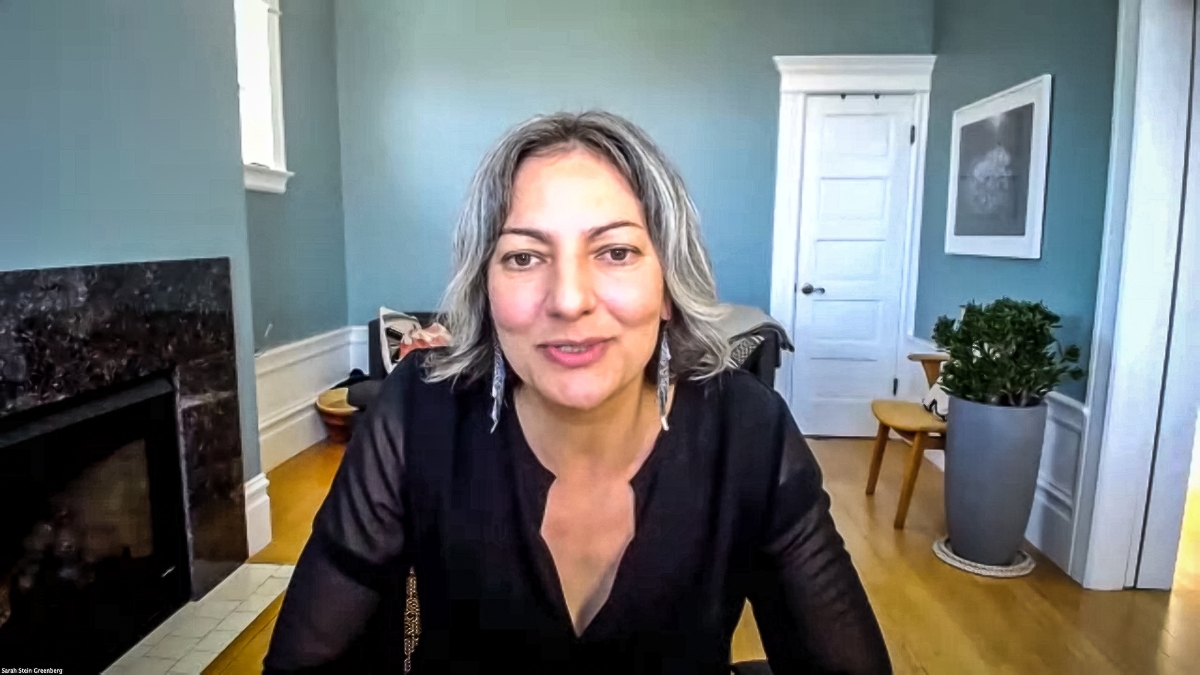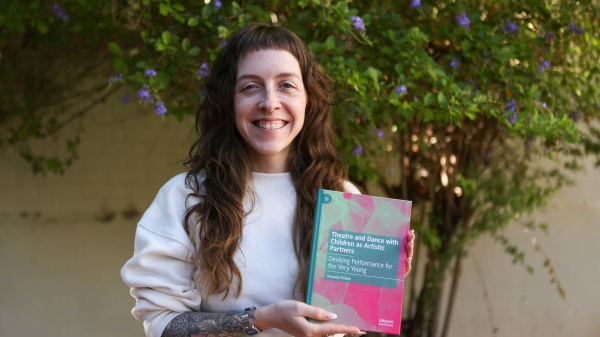Teaching students to embrace ambiguity can spark creativity, design expert says

Ambiguity is a challenging concept to embrace, but doing so can unlock the creativity and innovation needed to make big changes, according to a design expert from Stanford University.
Sarah Stein Greenberg, executive director of the design school at Stanford University, known as the “d.school,” addressed an Arizona State University audience on May 26 as the latest speaker for the Frank Rhodes Lecture Series. The livestreamed talk was sponsored by the University Design Institute at ASU, which explores ways to transform higher education.
At Stanford’s design school, students engage in “problem-finding” before they move on to “problem-solving,” she said. That happens through research, interviewing, observation and exploring historical context.
“We’re part of the movement around human-centered design, making sure there are human needs at the center of how we’re conceptualizing the problem we’re trying to solve,” said Greenberg, whose talk was titled, “The Journey from Not Knowing to Knowing.”
“What happens is that when they engage with our coursework, they wind up having to navigate much more ambiguity than they expect, and for many students, that can be very disorienting at the beginning.”
Greenberg said that skill in confronting ambiguity is not only crucial in design, but in any kind of creative work.
“The end point is not that you’re not a perfect expert or know everything about the thing you’re trying to design, but that you’re open to the fact that you don’t know the right answer, or that there is a right answer,” she said.
In the process, designers reframe the problem and contemplate many possibilities, which they evaluate through building many iterations.
Designers must find just the right amount of constraint on their process because too many restrictions will inhibit innovation but too few will create indecision.
“Developing judgment over time about how you leverage constraint in the right way to invite the right amount of ambiguity in your work is a skill we aspire to build in our students,” she said.
She gave an example: A group of students in Greenberg’s “Design for Extreme Affordability” course traveled to Bangalore, India, to work with a hospital chain. They didn’t know what problem they would solve but assumed it would be related to efficiency or cost reduction.
When they got to the hospital, they found hundreds of people waiting around the hospital, in the hallways and outside. They were worried family members of patients.
“The students were curious, so they interviewed them,” Greenberg said.
“The family members would be waiting not for hours but for days. The average time meeting with a doctor or nurse was very short, and there was a tremendous amount of anxiety and uncertainty and a lot of fear.”
This was outside the scope of what the students expected, but when they returned to Stanford, they worked on prototypes for ways that the family members could be included in the care process. Could they be taught to take the pulse or blood pressure of patients?
“They were trying to figure out if they could deliver education about this to a range of folks regardless of language or literacy level,” she said.
They returned to India to pilot a program in which nurses taught family members how to care for their sick relatives, which resulted in a line around the block of people eager to participate.
“At the end of their degree program they decided to defer everything and founded an organization called Noora Health, oriented around family members who are left out of the healing process,” she said.
“It was more powerful than what the faculty could have crafted.”
Greenberg asked the audience to gauge their own dispositions around ambiguity, whether they endure it reluctantly, engage with it most times but not always, or embrace it.
“I think highly functional teams have a mix of this,” she said.
She also discussed the ethical nature of the design process, starting with framing a problem.
“The framers of a problem get to choose it and look at it with their value system,” she said. “The framing of a problem is a form of power.”
That’s why inclusion is crucial.
“If you’re in a situation as a designer where you are not personally experiencing the set of challenges you’re working on, you have to be really thoughtful about making sure the breadth of people working on it includes people with the lived experience,” she said.
“The process of building, creating and testing solutions needs to be hugely collaborative.”
Greenberg noted that with the pandemic, many people are dealing with “ambiguity fatigue,” as they face uncertainty in their personal and professional lives as well as in society. Students who are working and fulfilling family responsibilities while attending college already are challenged with ambiguity.
“I think there’s a hesitancy to say, ‘You will be challenged,’” she said.
“But it’s so helpful to raise that possibility with students ahead of time. And it’s incredible to hear students say, ‘I’m in that part of the process where we’re navigating ambiguity.’ And they’ll have a conversation with their team or teacher about that.
“There’s something powerful in naming it.”
Top image: Sarah Stein Greenberg, executive director of Stanford University's design school, was the speaker for the Frank Rhodes Lecture Series at ASU on May 26. Screenshot by Charlie Leight/ASU News
More Arts, humanities and education

Exhibit to feature artwork inspired by oral histories from Arizona's oldest botanical garden
Though it is Arizona's largest botanical garden and has been an established touchstone of the community for more than 100 years, many students in Arizona State University Professor Ellen…

ASU center to host Spike Lee for Delivering Democracy 2025 program
The Center for the Study of Race and Democracy at Arizona State University will host Academy Award-winning filmmaker and cultural icon Spike Lee on March 1 for its annual Delivering Democracy…

ASU professor explores theater, dance for young children in new book
Arizona State University Assistant Professor Amanda Pintore believes in the artistic capacity of very young children. She's hoping to spread that awareness to others with the recent publication of…